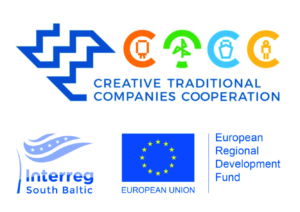3rd Physical Training – Design for Innovation
The 3rd training was held in Karlshamn on 5-6 November 2018. Representatives of maritime blue and green SMEs and creative South Baltic industries cooperated through various tasks and discussions towards inventing of new approaches for bringing innovation in the everyday operations.
The main idea of the workshop was Innovation by Finding Novel Ways of Combining Capabilities And Resources of Different Companies (C&T). Training offered companies an opportunity to explore ways to reinvent their ideas or start-ups or small-medium business to keep the edge in the market.
Guided by the creative coaches and trainers: Ryan Ruvalds, Itziar Pobres Gamarra, Dr. Lawrence Henesey and Mahwish Anwar, Msc, participants learned how to:
- Explore and frame current opportunities within the Maritime, Tourism, and Sustainable Energy ecosystems. Which actors are involved? What are their goals? What prevents them from accomplishing them? How do they attempt to solve the situation? What resources and skills they have?
- Use creative industries’ capabilities and resources as potential patterns for developing new value propositions. How could services in the fields of Maritime, Tourism, and Sustainable Energy Production be if we could mix in the experiences, the culture, or the production systems of creative industries?
- Develop iteratively ideas into concepts by prototyping the new products, services, or strategies.
- Understand the work of new services. Are they understandable? Are they perceived as valuable? What is the experience of users and clients? What works and what doesn’t? What additional prototyping activities do we need to perform to further explore and refine each proposal?
- Analyze and operationalize collaboration among two or more involved companies. When are the different capabilities needed? Who holds each skill or resource? How will diverse organizations collaborate?
- Get closer to joint innovation — Reflect on the previous process. Was collaboration fruitful? Was it easy? What are the potential barriers to translate the experience beyond the workshop and into real joint innovation projects? Which are the challenges, capabilities, and resources of the participant companies that pose an opportunity for joint innovation? Is there a need for any kind of support? What would be a realistic roadmap for such collaboration?
Another benefit of the 3rd Physical Training was an opportunity for the 30 companies’ representatives to connect with the Creative Industries located in the Blekinge Region and surroundings as well as to build a strong network with the traditional and creative companies of the South Baltic Region.




